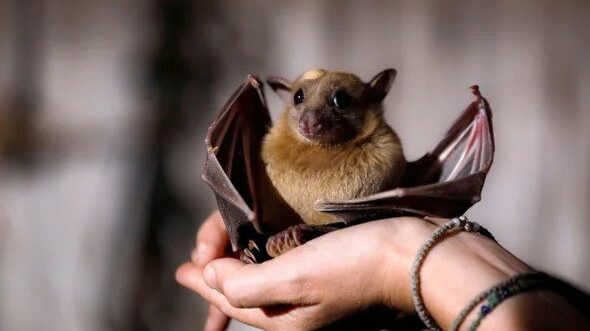
Algorithms have revealed complex communication among Egyptian fruit bats. Analysis of audio and video recordings showed that the bats argue over food, distinguish between genders and use individual “signature calls” as names. Credit: Amir Cohen/Reuters/Alamy Stock Photo
AnimalsTechnology USAHere’s How AI Can Help Us Communicate with Animals
Thanks to digital bioacoustics where advanced sensors and artificial intelligence meet, we can observe and decode how species communicate among themselves, thus rethinking our relationship with them.
“We are now approaching these animals and not asking, “Can they speak like humans?” but “Can they communicate complex information to one another? How are they doing so? What is significant to them?” And I would say that’s a more biocentric approach or at the very least it’s less anthropocentric,” explains Karen Bakker, a professor at the University of British Columbia and a fellow at the Harvard Radcliffe Institute for Advanced Study.
Past human attempts to communicate with animals were too anthropocentric; the idea would have been to engage in complex communication on their own terms, in their own embodied way, in their own worldview. Bakker’s book talks about the notion of umwelt, the world as it is experienced by a particular organism. Technology can help humans communicate with species such as bats and honeybees – the latter’s way of communicating is vibrational and positional, meaning that when speaking to one another, it’s their body movements and the sounds they make that matter. Small, portable, lightweight digital recorders are placed on the backs of turtles or whales. These microphones record continuously, 24/7. Artificial intelligence processes the data collected through algorithms that can detect patterns in nonhuman communication. For example, Egyptian fruit bats vocalize. A voice recognition program allowed the analysis of 15,000 sounds, and the algorithm correlated specific sounds with specific interactions. Thus, bat sounds could be classified. Through digital bioacoustics, humans open new ways to think about conservation and their relationship to the planet.



